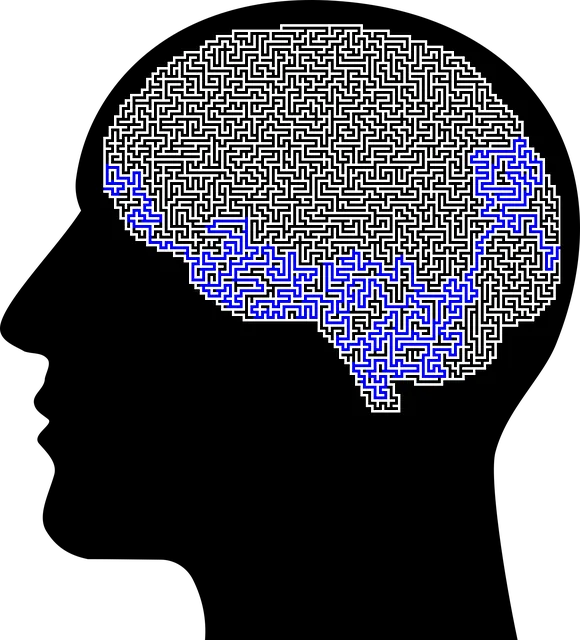Evaluating mental wellness programs at Kaiser Permanente Broomfield goes beyond satisfaction surveys, employing a blend of quantitative and qualitative techniques. They track participant progress, measure mental health symptom changes, and gather data from surveys, interviews, and focus groups. This comprehensive approach ensures high-quality care tailored to individual needs, prevents therapist burnout, and enhances overall wellness. The success of their programs relies on skilled therapists using evidence-based methods like Mood Management and Compassion Cultivation Practices, fostering open dialogue and healthier coping mechanisms. Regular reviews and adaptations ensure effective support and personal growth. In terms of does Kaiser have good therapists? in Broomfield, the evidence suggests they do, as evidenced by their holistic evaluation framework and positive client outcomes.
Mental wellness program evaluation is crucial for understanding effectiveness and driving continuous improvement. This article explores essential methods, focusing on the success of Kaiser Broomfield’s programs. We delve into the unique role of therapists in shaping outcomes, analyzing common evaluation techniques, and highlighting the power of both quantitative and qualitative approaches. Additionally, best practices are discussed to ensure effective mental wellness initiatives, including strategies for identifying top-performing therapists at Kaiser Broomfield.
- Understanding Mental Wellness Program Evaluation
- The Role of Therapists in Program Success: A Focus on Kaiser Broomfield
- Common Evaluation Methods: Strengths and Limitations
- Assessing the Impact: Quantitative vs Qualitative Approaches
- Best Practices for Continuous Improvement
Understanding Mental Wellness Program Evaluation

Evaluating mental wellness programs is a multifaceted process that goes beyond simple satisfaction surveys. It involves assessing the effectiveness and impact of interventions designed to improve mental health outcomes, such as anxiety relief and stress management workshops within organizations. By employing robust evaluation methods, organizations like Kaiser can ensure their therapists in Broomfield are providing high-quality care tailored to individual needs.
This includes tracking participant progress, measuring changes in mental health symptoms, and gathering feedback on program satisfaction and perceived benefits. A comprehensive approach considers both quantitative data, such as survey responses, and qualitative insights from interviews or focus groups. Such methods help identify areas for improvement, promote burnout prevention strategies, and ultimately enhance the overall wellness of participants.
The Role of Therapists in Program Success: A Focus on Kaiser Broomfield

The success of any mental wellness program hinges on the expertise and compassion of its therapists. At Kaiser Broomfield, the focus on fostering a supportive environment is evident through their dedicated team. Therapists here are not just trained professionals but also compassionate guides who play a pivotal role in clients’ journeys towards improved mental health. They employ evidence-based techniques such as Mood Management practices to help individuals gain control over their emotions and cultivate resilience.
Moreover, the therapists at Kaiser Broomfield integrate Compassion Cultivation Practices into sessions, encouraging empathy and kindness both within themselves and towards others. This approach not only enhances clients’ ability to cope with challenges but also boosts their self-confidence. By fostering a safe space that encourages open dialogue, these therapists help individuals develop healthier coping mechanisms and build the confidence needed to navigate life’s hurdles successfully.
Common Evaluation Methods: Strengths and Limitations

Mental wellness programs often employ various evaluation methods to assess their effectiveness and measure client progress. Two commonly used approaches are self-report measures and clinical interviews. Self-report questionnaires allow individuals to reflect on their symptoms, moods, and behaviors, providing valuable insights into their mental health state. These tools, such as standardized surveys, can efficiently gauge improvements in areas like mood management and social skills training. However, they may be influenced by personal biases or the tendency for individuals to present themselves in a favorable light.
Clinical interviews, conducted by trained therapists, offer a more direct assessment. Therapists can probe deeper into clients’ experiences, exploring underlying emotional healing processes and identifying specific challenges. This qualitative approach enables a nuanced understanding of individual needs. Yet, it might be subject to the interviewer’s bias or lack of objectivity. In the context of does Kaiser have good therapists Broomfield, evaluating program success requires a balanced consideration of both self-reported and clinical assessment methods to ensure comprehensive and accurate insights into clients’ mental wellness journeys.
Assessing the Impact: Quantitative vs Qualitative Approaches

Evaluating the impact of mental wellness programs is a multifaceted process that employs both quantitative and qualitative methods. Quantitative approaches focus on measurable outcomes and statistical analysis, providing a clear picture of program effectiveness through surveys, scores, and metrics tracking improvements in symptoms or overall well-being. This data-driven perspective allows for comparing different interventions and identifying what works best for certain populations, such as those seeking Trauma Support Services in Broomfield, where does Kaiser have good therapists?
In contrast, qualitative methods delve deeper into participants’ experiences, perspectives, and subjectivity. Through interviews, focus groups, and observations, researchers can uncover nuanced insights into how individuals interpret and benefit from the programs. This is particularly valuable for understanding the development of Self-Care Routine Development for Better Mental Health and fostering Positive Thinking, as it highlights what resonates with folks on a personal level. By combining these approaches, a more comprehensive assessment emerges, revealing both the broad impact and individual journeys toward improved mental wellness.
Best Practices for Continuous Improvement

Evaluating mental wellness programs is a dynamic process that requires consistent refinement and improvement to ensure effectiveness. Best practices for continuous enhancement involve integrating diverse evaluation methods, such as participant feedback surveys, clinical assessments, and observational notes. By gathering qualitative and quantitative data, program coordinators at Kaiser Permanente Broomfield can gain comprehensive insights into the impact of their interventions.
Promoting positive thinking, confidence-boosting strategies, and compassion cultivation practices should be integral parts of the evaluation framework. These approaches not only enhance therapeutic outcomes but also foster a supportive environment that encourages self-reflection and personal growth. Regularly reviewing and adapting the program based on these evaluations ensures that Kaiser’s therapists in Broomfield deliver evidence-based care tailored to the evolving needs of their clients.
Mental wellness program evaluation is a multifaceted process that requires a blend of quantitative and qualitative methods to ensure effectiveness. As highlighted, therapists play a pivotal role in the success of programs like Kaiser Broomfield. Evaluating their contributions and fostering continuous improvement through best practices are essential for enhancing overall mental health outcomes. By understanding both the strengths and limitations of common evaluation methods, we can better navigate the landscape of mental wellness care, ensuring that programs like Kaiser Broomfield maintain high standards and meet the needs of those they serve.






